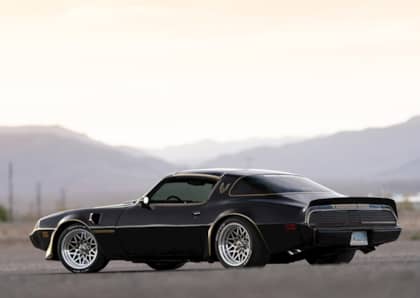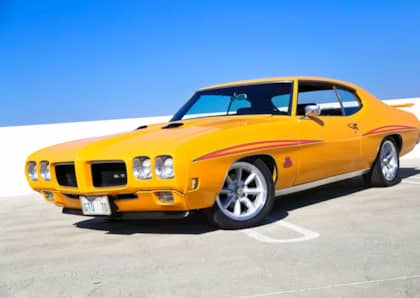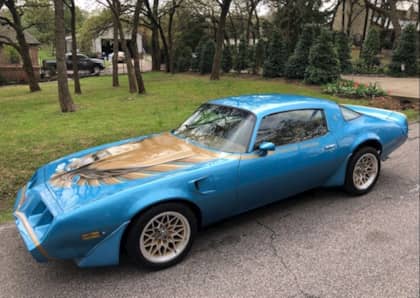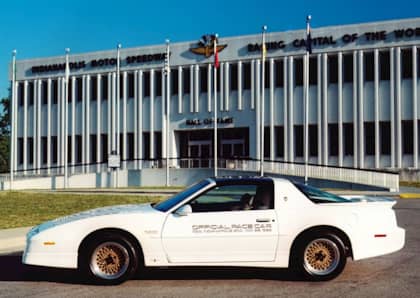The AMC Javelin Was The Last True Independent Muscle Car In America
AMC was the last major independent American car company to survive past the 1960s. While it would ultimately see itself absorbed first by Renault, then by Chrysler over the course of the 1980s, the Wisconsin-based brand had its moment of muscle car glory alongside Detroit's finest during the golden age of horsepower.
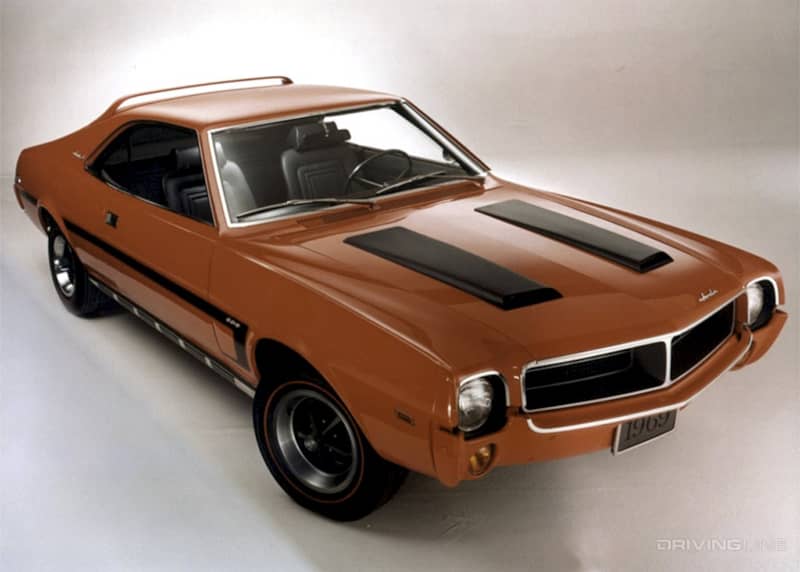
In fact, the 1968 to 1974 AMC Javelin (and its AMX spin-off) count as the final high performance gasp from a company that had always operated outside of the Big Three's borders. Sleek, fast, and with a race-winning history that is often overlooked by modern collectors, the American Motors Corporation's Javelin makes a fine alternative choice to the Ford Mustangs, Chevrolet Camaros, and Plymouth 'Cudas it did battle with on both the street and the track.
Pony Persuasion
AMC had been experimenting with a small coupe all the way back in 1966, after the popularity of the Ford Mustang proved that buyers were willing to get behind a stylish, affordable, and occasionally quick two-door.
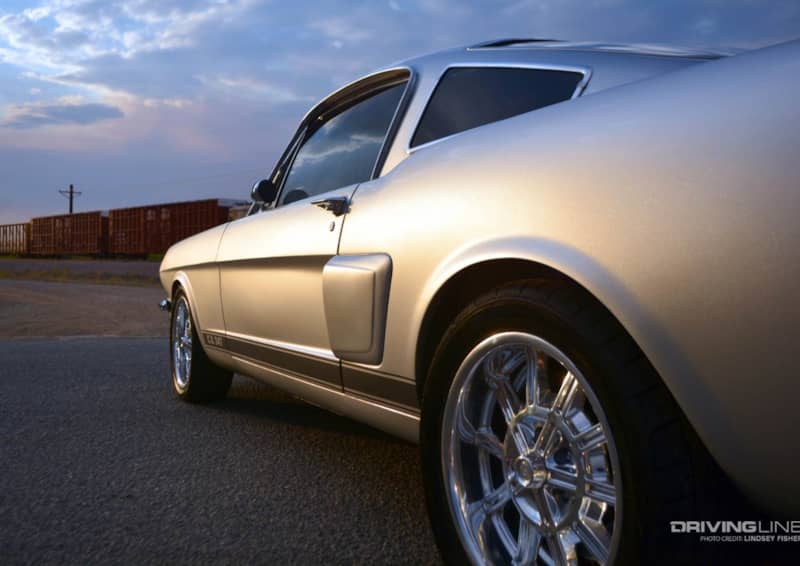
The so-called 'pony car' market was hot and American Motors wanted in, developing a pair of concepts under the 'AMX' banner that showed off different seating configurations that both eventually found their way to the market.
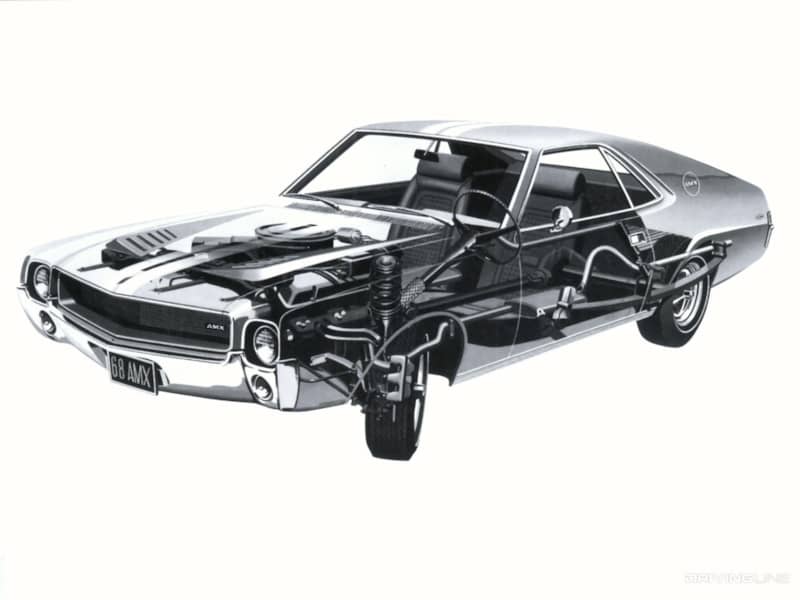
The first-generation AMC Javelin was born from the AMX project and built on the Rambler American chassis, and when it arrived in showrooms in 1968 immediately established itself as a threat to the established pony car order. The Javelin could be had with a range of engines, but the most popular proved to be its two V8s: a 258 cubic inch, 225hp unit in the base car, a 343 cubic inch upgrade good for 235hp and a sizable boost in torque.
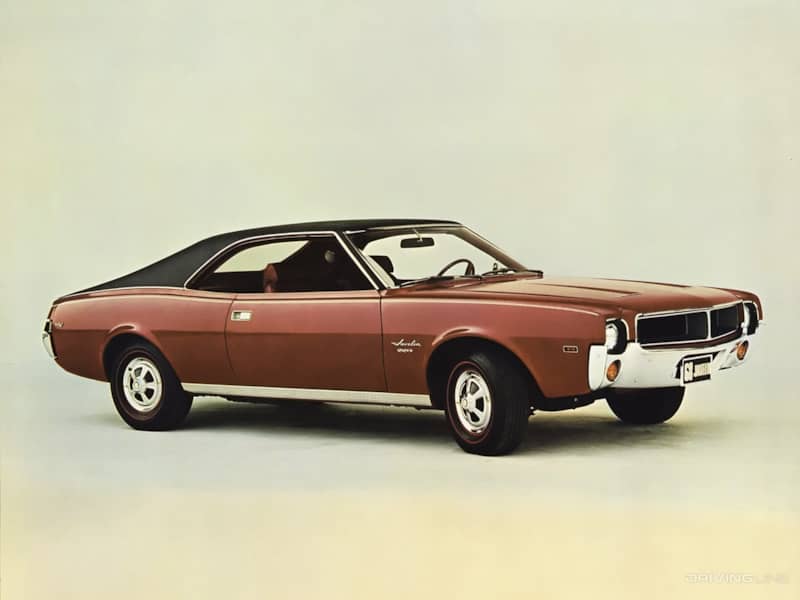
The Javelin (which was slightly roomier inside than its rivals) proved to be balanced and fun-to-drive, especially considering its price point, and its engines were a good match for entry-level and mid-range Mustangs and the Camaros. AMC wasn't finished with the Javelin's charms, however, introducing the 'Go Package' (suspension upgrades, dual exhaust, power brakes) for the 343 cubic inch car, as well as an optional 390 cubic inch motor that churned our 315hp and 425 lb-ft of torque. The latter arrived halfway through the first model year and elevated the Javelin among its peers, making it a serious muscle car contender.
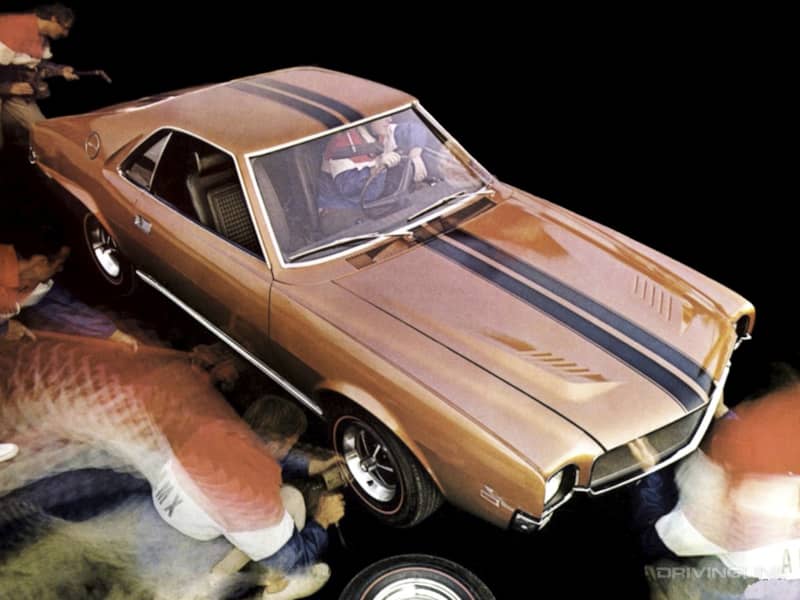
There were limitations to the Javelin, of course, mostly tied in to AMC's smaller development budget. There was no convertible version to be found, which put it at a disadvantage when compared against Detroit's finest, but the company balanced this out by going whole-hog on an accessories campaign that included a long list of spoilers, paint colors, and other add-ons that attempted to charm buyers looking to stand out from the crowd. It also created a unique two-seat version of the Javelin called the AMX as its own sub-model, riding on a short wheelbase version of the coupe's platform that could only be ordered with a V8 engine.
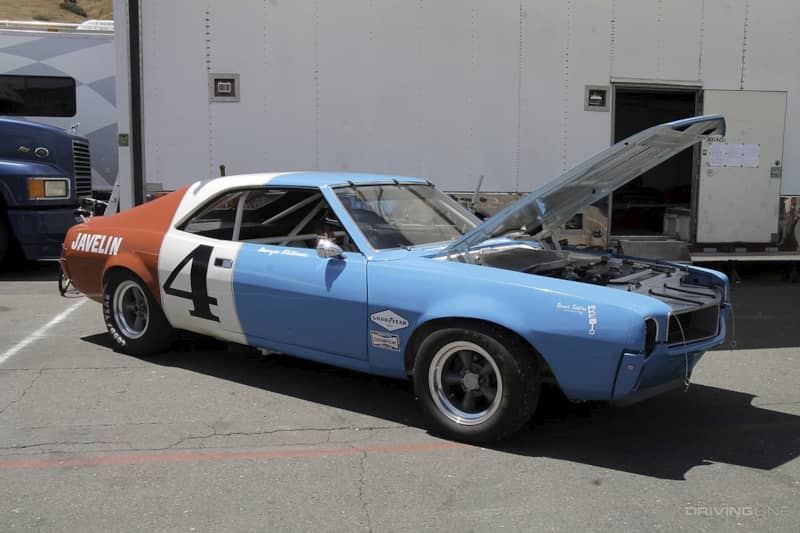
Then there was the company's racing program. Starting in 1968 American Motors dove head-first into SCCA Trans-Am competition with the Javelin, where it took on cars like the Mercury Cougar and the Ford Mustang Boss. A third-place finish that year was as good as a win for a team working on as little money as AMC's effort. After a less-than-stellar '69 season, however, the program shifted to Roger Penske's auspices after he abandoned Chevrolet's Camaro team in the same series.
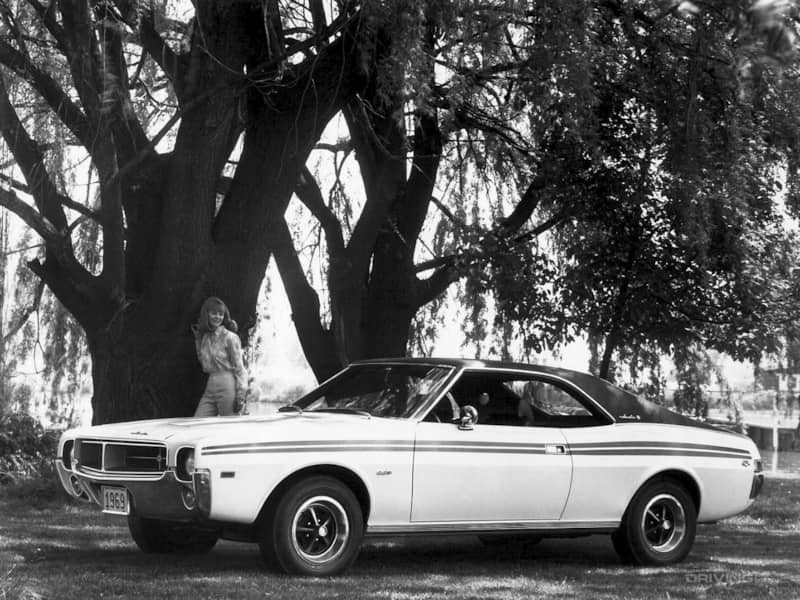
With a slightly different look for 1970, the factory also introduced new small block V8 engines (a 225hp 304 CID, and a 345hp 360 CID design), and redesigned the 390 to produce 10 additional ponies. Penske destroked the 390 to create a bespoke 5.0L motor specifically for Trans-Am, which lead to a second place podium for the team (lead by driver Mark Donohue) that season. The cars were impossible to miss on the track with their red, white, and blue livery, and Donohue would even get his own special edition of the street car to be sold to fans in the know.
Bigger, Bolder, Gone
The AMC Javelin was redesigned for 1971, approaching the also-new Mustang in terms of attitude, especially when seen from the front. AMC continued to position the Javelin as 'class above' in terms of size (it was larger in almost every dimension compared to other pony cars), and this philosophy eventually affected engine specs, too: the 360 cubic inch motor grew to 285hp in 1971, while the 390 was replaced by a 330hp 401 cubic inch V8.
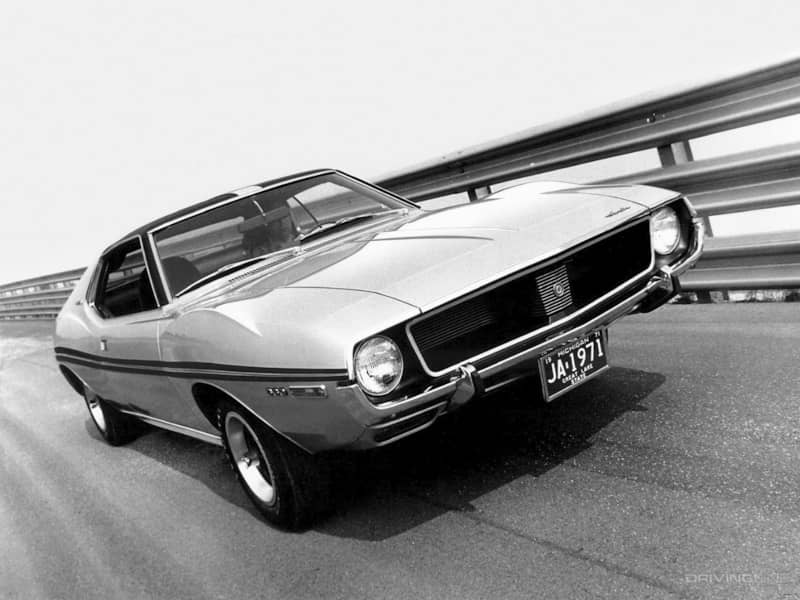
The pocket-rocket AMX was no longer its own pint-size model. Instead, AMC incorporated it into the Javelin's list of trim levels. The 'Go Package' was still in the picture, and although the Javelin was heavier than before it continued to deliver the goods in a straight line, staying competitive with all but the big block V8 muscle machines that saw their horsepower peak in '71.
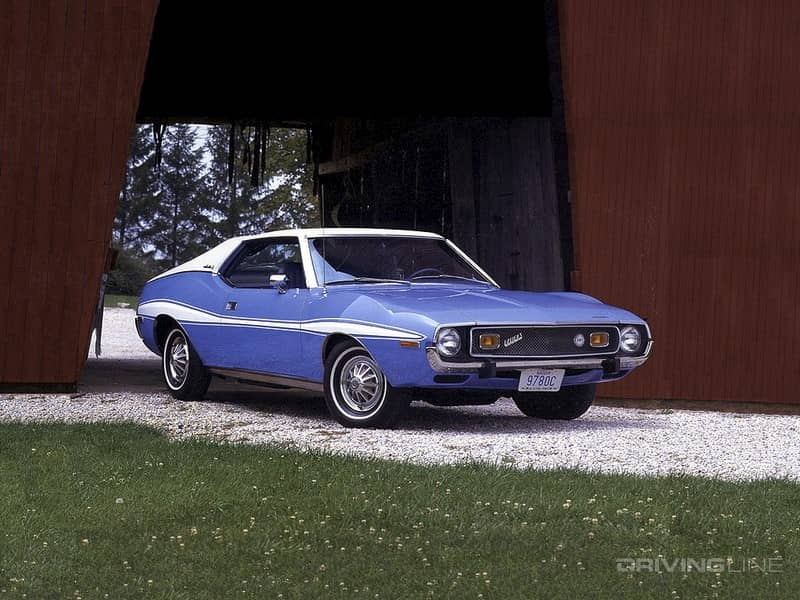
Even more impressive was the capability of the revised Javelin on a road course. Penske and Donohue pushed AMC into back-to-back Trans-Am championships for 1971 and 1972, an incredible feat considering how much better endowed their Blue Oval, Bowtie, and Pentastar grid mates were in terms of finances and engineering resources. AMC celebrated the victories with a special edition version of the Javelin in 1973 (the Trans Am Victory model), which helped disguise the fact that the bloom was coming off the performance rose.
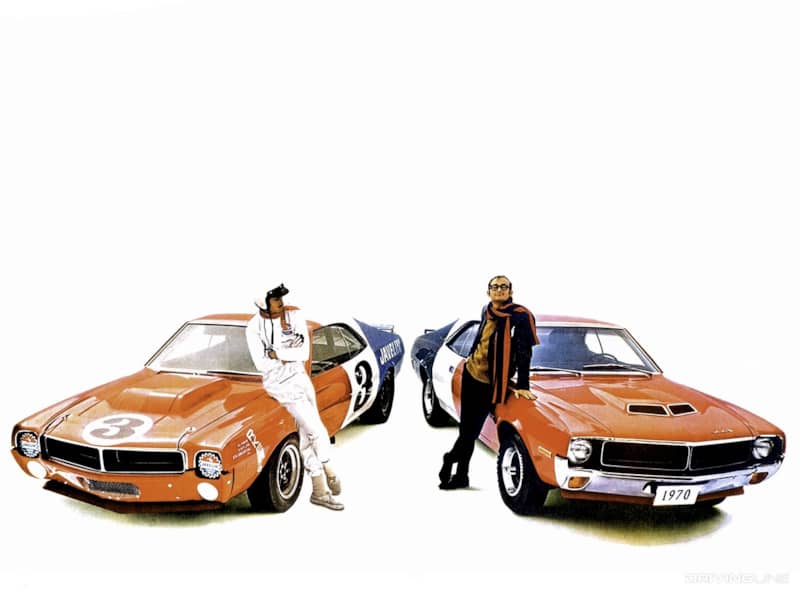
Just like in Detroit, American Motors faced the same insurance and smog-related pressures to dial down the horsepower in its muscle cars. In 1972 'net' engine ratings from the SAE saw output lowered across the board, with the emissions controls introduced in '73 cutting things even further. Once again AMC would attempt distraction by producing unusual editions of the Javelin (including a long run of cars 'designed' by fashionista Pierre Cardin), but by 1974 it was clear that the coupe was at the end of the line. Although the car ended production at the end of that year, it would continue its Trans-Am campaign, winning a third title in 1976.
Different Flavor
Today, the AMC Javelin is rarer than a Mustang—what isn't?—but that doesn't mean it's difficult to find. With well over 100,000 examples built across both generations, there's a healthy community supporting these fast and fun cars, and if you happen across any of the radical interior and exterior paint combinations that were available from AMC's forward-thinking designers and collaborators, the Javelin delivers an extra dose of in-period authenticity and style.
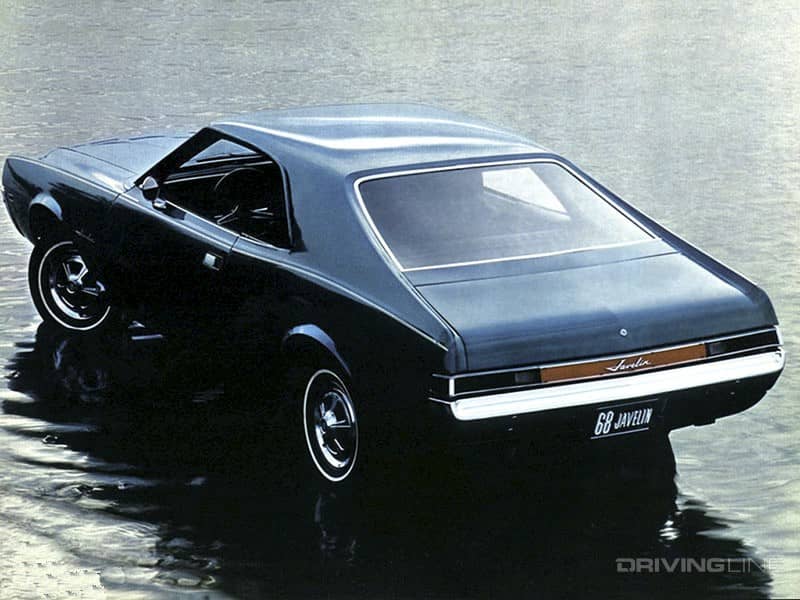
Another plus when it comes to restoring or maintaining a Javelin: AMC's limited budget meant it had to share many of its parts across its entire vehicle line-up, which in turn translates into standardized replacements and knowledge across the American Motors ownership base. Whether you're looking to build a Trans-Am replica or just a solid cruiser, the Javelin is a classic car that deserves a second look.




